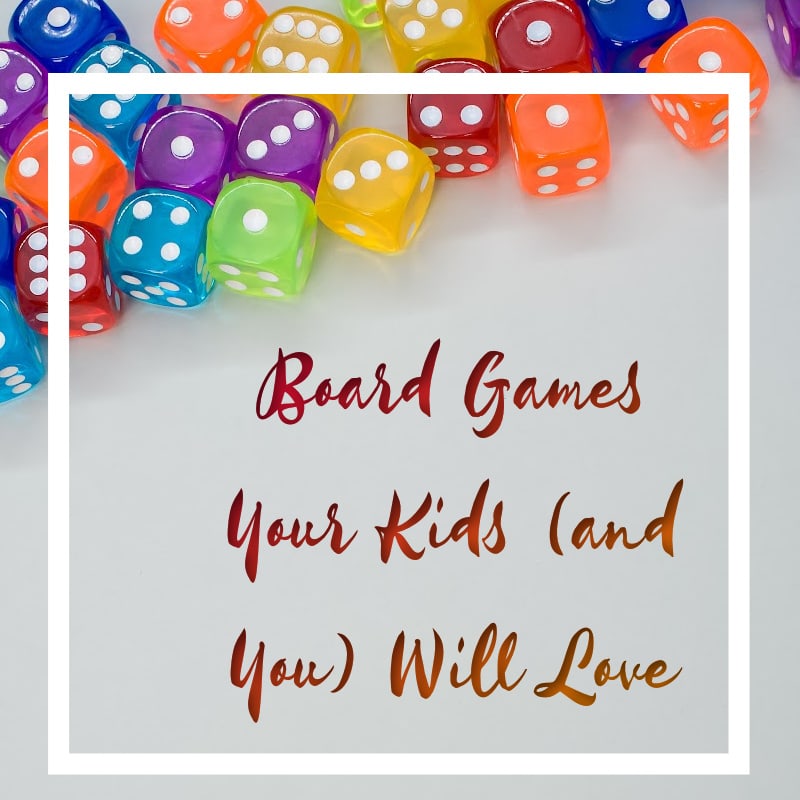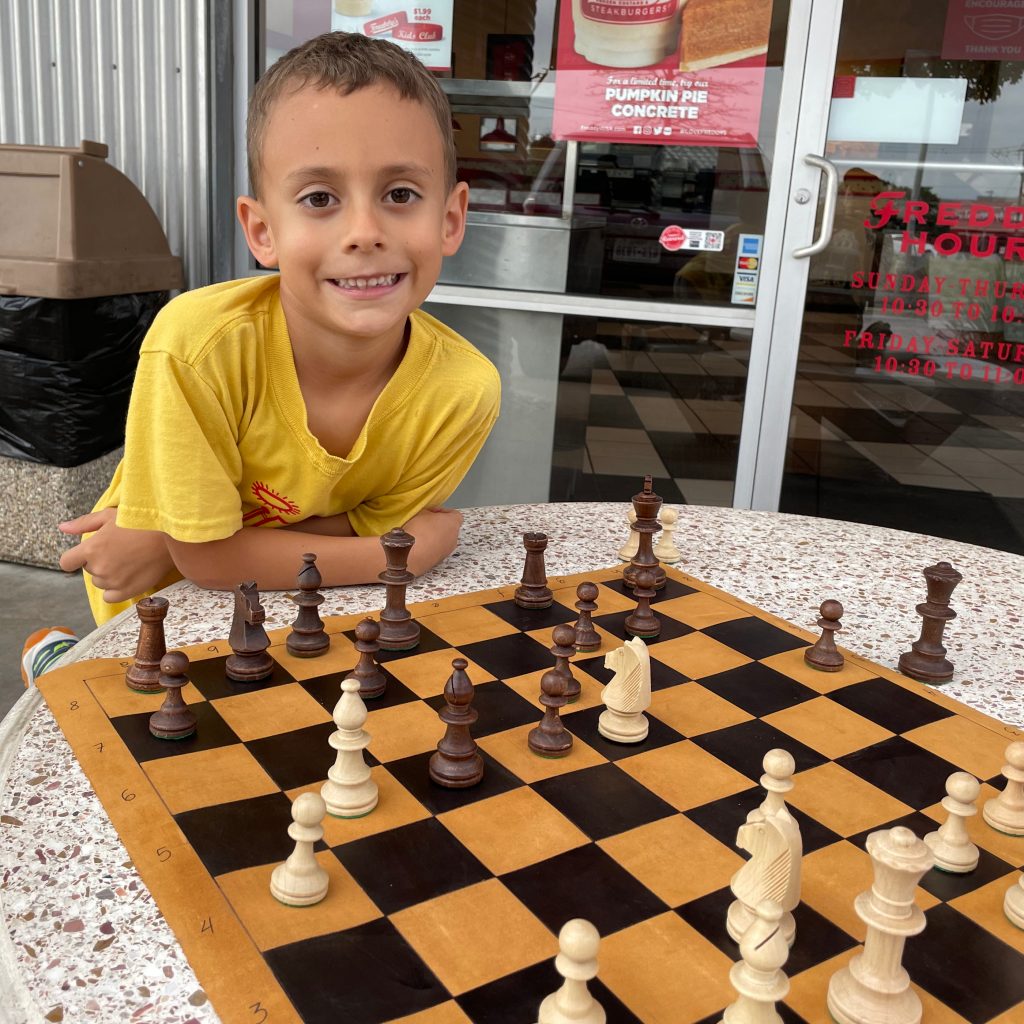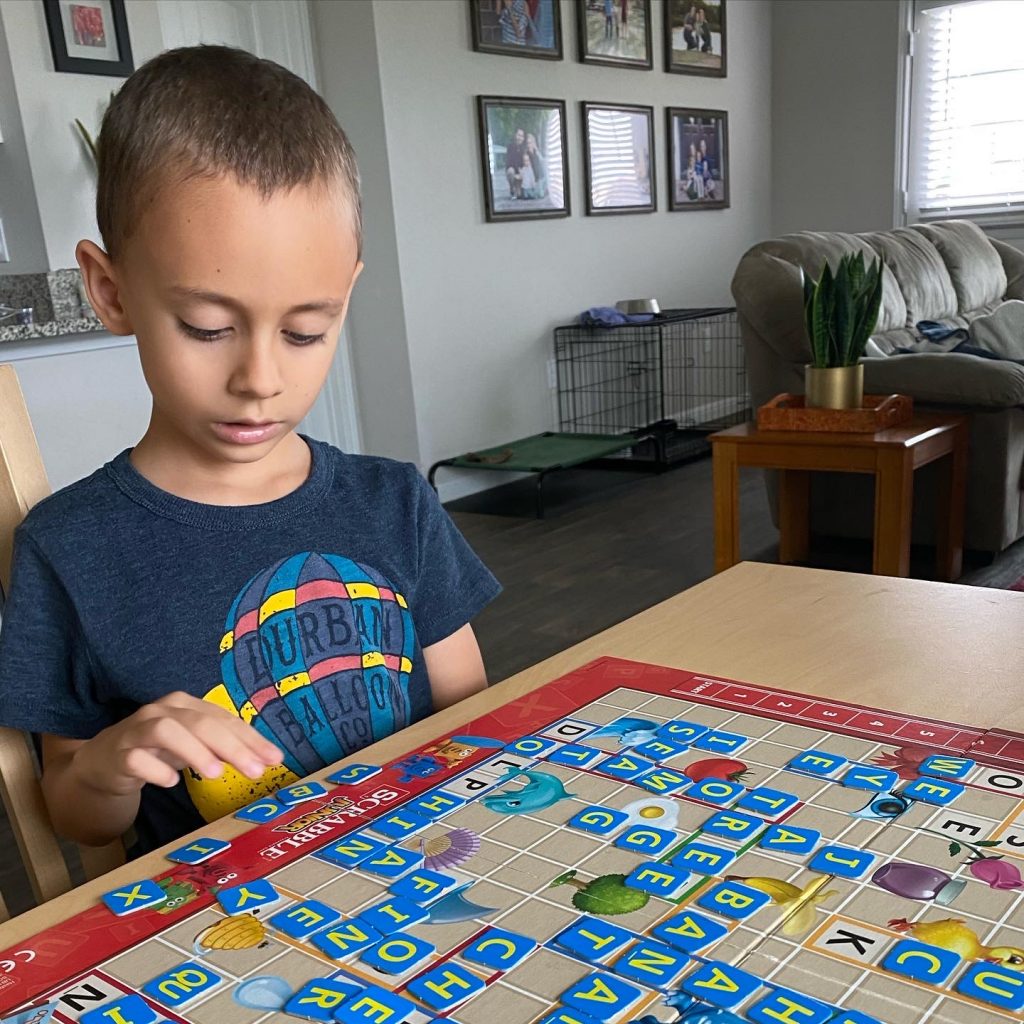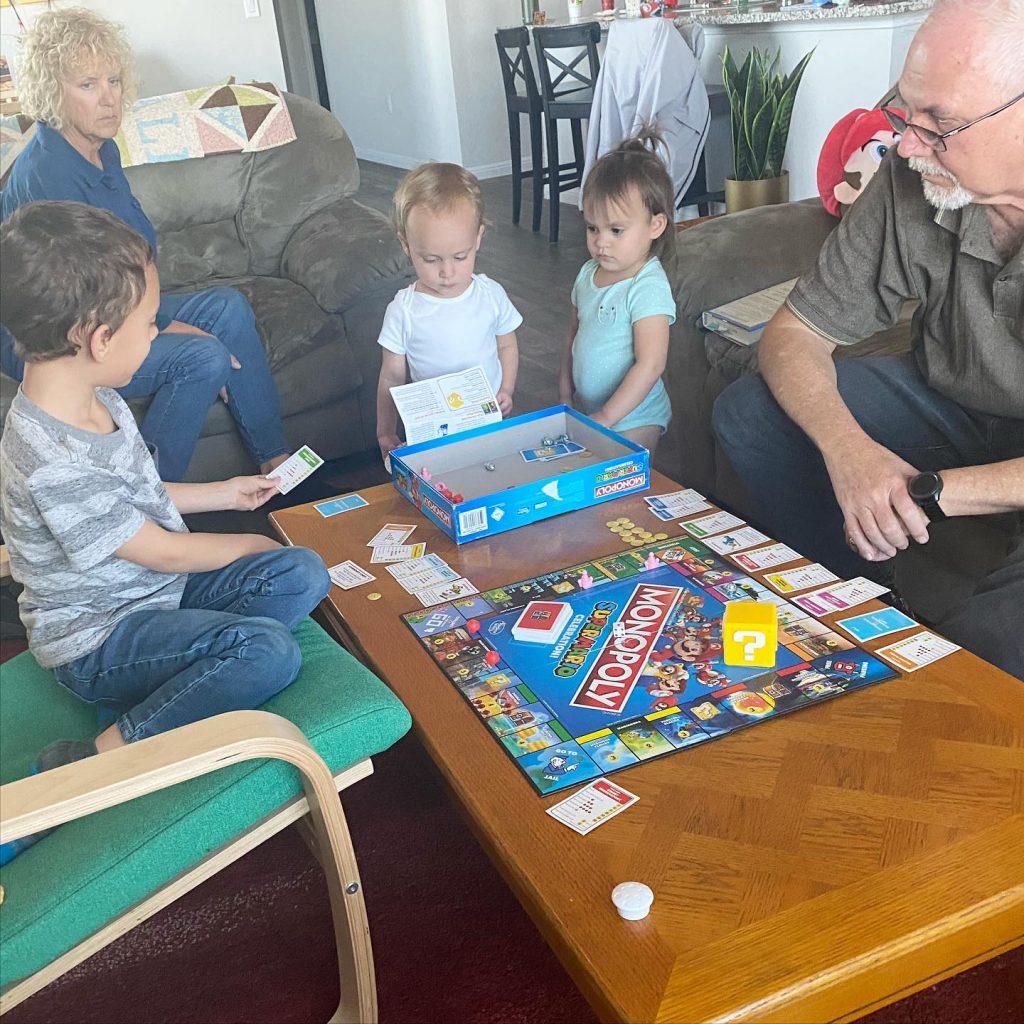How do you feel about board games (or, as my 3-year-old nephew calls them, “people games”)? Personally, I’m a big fan and always have been. We played a lot of games when I was growing up. In my teens and early twenties, our family had nightly games of Skip-Bo or Upwords, and my Dad and I often had an ongoing game of Gin Rummy. Other board games were part of our family culture, too, and I always looked forward to the day when I would get to introduce board games to children of my own.
I’m happy to report that Charleston loves games every bit as much as his mom, perhaps more. Now that he is beyond the beginner games stage (though he’s still always up for a game of Candy Land, Hungry Hungry Hippos, Pop the Pig, or Chutes and Ladders), games have become one of our favorite ways to connect. As his mom and teacher, I love the educational value games offer: even “non-academic” games teach skills like strategy, turn-taking, sportsmanship, and reading (I always have Charleston read the instructions of our new games), and many games incorporate traditional learning. Games are also a fantastic way to connect as a family with minimal planning or time/weather considerations. Bonding + fun + learning (with NO screens)? It’s an equation that’s hard to beat.
We have amassed a fairly large game collection in recent months, in addition to a number of games we’ve gotten to try out through our library’s game rental program. Today I thought it might be fun to share some of our favorites. Games seem to have had a resurgence in popularity in the past few years, so I have a feeling you and your kids might be itching to play. This roundup may introduce you to something new (or remind you of games you already own!), and the smaller packaged games on this list could be great Easter Basket fillers (I’ve marked games with Easter basket potential with an asterisk).
These are all games that Charleston, at 7, currently enjoys playing and that have also received my Mama Stamp of Approval. We have a lot of younger kid games, too, as well as several geared towards adults (Scattegories is my favorite!), but I created this list with early elementary-aged kids in mind. For each game, I’ve noted the recommended playing age, as well as the number of players needed for the game, though these numbers are of course adaptable (we often play teams with the two-player games, and as you will see, some of these games are meant for older kids but Charleston has no trouble playing them).

THE CLASSICS
We have been teaching Charleston some traditional card games, and he and Luke love playing checkers and chess. Dominoes is another fun game even the twins have fun with. And then there are these board games that I enjoyed growing up and Charleston loves now, too.
Mouse Trap This was the first game I remember Charleston really getting into, and he was obsessed with it for quite a while after seeing it in a movie. The game itself is fine, but we have the most fun playing with the obstacle course once the game is done. (Recommended for 6 and up // 2 to 4 Players)
Battle Ship* Such a great game for teaching strategy and coordinates—skills that have transferred nicely to our geography and math schoolwork. We own the travel edition which is exactly like the original, just smaller, and would make a great Easter Basket filler or stocking stuffer. (Recommended for 6 and up // 2 Players)
Guess Who? I have so many fond memories of playing this with my dad when I was younger, and unlike many updated games, this newer version is actually better—mostly because the players are more diverse, making for a more challenging game. In addition to teaching strategy and question asking skills, the game has also led to some interesting and helpful conversations on things like race and physical features. (Recommended for 6 and up // 2 Players)
Sorry! Easy to learn and great for all ages, this one is a classic for a reason. (Recommended for 6 and up // 2 to 4 Players)
Life This game is tons of fun and has been great for teaching Charleston about. . . well, about life. The game has exposed him to the idea of career and college paths, the meaning of success, money management, and even family planning. He enjoys the game so much that he doesn’t realize it’s an entire Social Studies lesson in a (board game) box. (Recommended for 8 and up // 2 to 4 Players)
Clue This was probably my favorite game as a child, and I am thrilled that Charleston is now old enough to play it with me. I do find it strange that Mrs. White has been replaced with a new character, Dr. Orchid, in the newer versions but otherwise this is true to the original. (Recommended for 8 and up // 2 to 6 Players, best with at least 3 players)

JUNIOR GAMES
Junior versions of games are a great way to introduce kids to the classics before they’re ready for the real thing. These Junior games are all just as fun as their originals, in some instances even more so.
Sequence Junior This is pretty true to the original Sequence game, but simpler and with animals instead of card images. This is a more recent addition to our game closet and I wish we had gotten it sooner, as it really is geared towards slightly younger kids. This will be great to play with the twins in a year or so. (Recommended for Ages 3-6 // 2 to 4 Players)
Scrabble Junior I am so impressed with the designers of this game, who managed to maintain the premise of the original Scrabble while making it accessible to early readers. The board is double-sided, with a letter-matching format on one side (for beginners) and a more advanced word-building option on the back. (Recommended for 5 and up // 2 to 4 Players)
Skip-Bo Junior* My family LOOOOOVES Skip-Bo, and this simpler version has been a great way to introduce Charleston to a card game he will doubtless be spending a lot of time playing in the future. The cards can be used to play the traditional way too. (Recommended for 5 and up // 2 to 4 Players)
Clue Junior We have actually found this junior version to be more complicated than the original, and nearly as fun, without the murder component. Players solve the case of who broke the toy, not who committed murder. (Recommended for 5 and up // 2 to 6 Players)
Catan Junior I have not played the adult version of Catan so I can’t say how this one compares. It took a while to figure out how to play, but once we understood the rules it quickly became a favorite. In fact, it might be my favorite game in this roundup! Charleston enjoys it too and it’s been fun to see his strategy improve. (Recommended for 6 and up // 2 to 4 Players)

LEARNING GAMES
As I mentioned above, there is educational value in nearly any board game, but some are explicitly academic. These are a couple that Charleston loves (and doesn’t even realize playing them is essentially “doing school”).
Math Dice Game* This quick, simple, and portable game is fantastic for working on mental addition and subtraction skills. (Recommended for 6 and up // 2 or More Players)
Guess in 10* This is a fun take on the game Twenty Questions, with some fun little loopholes and challenges thrown in. There are several themed versions, ranging from easier (Things That Go, Around the Town, Inspiring Professions) to more advanced (Countries of the World, Legendary Landmarks, Foods around the World). We have and love the animal edition, and will probably get a few more when Charleston gets older. This is a great game to keep in the car or your purse for downtime while on the go or even at a restaurant. (Recommended for 6 and up // 2 to 6 Players)
OTHER GAMES
These games that don’t necessarily fall into tidy categories are some of our very favorites.
Race to the Treasure I love that this is a cooperative game in which players work together to win rather than competing against each other. It requires strategy and teamwork and has a fun and unique premise that I haven’t seen in other games. (Recommended for 6 and up // 2 to 4 Players)
Spot It!* This is another great on-the-go game that develops focus and perception skills. And I’m not just talking about kids: I’ve found this game helps ME in these areas that have gotten a little rusty as I get older. Because winning requires such rapid thinking (something kids are great at), it’s a pretty equalizing game: no need for the adults to “hold back” in order to level the playing field. There are several varieties of the game (we own the Pixar one) but the original is best. (Recommended for 6 and up // 2 to 8 Players)
Uno Attack Just like traditional Uno, but with some action thrown in thanks to a launcher that dishes out random numbers of cards. This is great for families who already love Uno and are ready to shake it up. (Recommended for 7 and up // 2 to 10 Players)
Mario Monopoly I actually hate am not a fan of the original Monopoly game. I also am not into Mario. And somehow, I really love this game, probably because t’s not as complicated as traditional Monopoly and more fast-paced. It has been a surprising hit with our whole family, grandparents included. (Recommended for 8 and up // 2 to 6 Players)
Disney Codenames After being introduced to the adult version of this game recently, I couldn’t wait to get my hands on this family friendly version. Like Catan and Clue, it’s a game that’s hard to explain but once you’ve nailed down the premise it’s a blast. Excellent for teaching pattern recognition and vocabulary, and perfect for large groups. (Recommended for 8 and up // 2 or More Players, best with at least 4 players)

Do you and your kids enjoy games? What are some of your favorites? We are always looking for more game recommendations, so pass them my way!